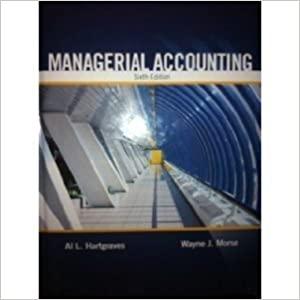Question
First, lets think about the basics. Answer the following: 1) Describe the accounting concept of a business combination. Is disso lution of all but one
First, lets think about the basics. Answer the following: 1) Describe the accounting concept of a business combination. Is dissolution of all but one of the separate legal entities necessary in order to have a business combination? Explain. 2) What are the legal distinctions between a business combination, a merger, and a consolidation? 3) When does goodwill result from a business combination? How does goodwill affect reported net income after a business combination? 4) What is a bargain purchase? Describe the accounting procedures necessary to record and account for a bargain purchase. 5) Compare the recognition criteria for intangible assets acquired in a business combination to the ones for internally-generated intangible assets. Discuss whether a companys workforce can be recognized in the course of a business combination. 6) How does a company go about determining the fair value at acquisition date? What is the fair value hierarchy? 7) Which valuation methods are allowed for the measurement of intangible assets acquired in the course of a business combination? Which input parameters are typically needed when measuring intangible assets (using one of the methods identified above)?
British American tobacoo and Raynolds tobacco company
Now, on to your business combinations. Answer the following questions using an internet search:
8) What information is available about recent merger activity (last 5 years) for both the acquirer and acquiree? What was the companiesmost significant acquisition other than the one you are studying? What was the business strategy underlying the companies merger activity? How were the acquisitions financed (common stock, preferred stock, cash, debt, or some combination)? Was it a vertical, horizontal, or conglomerate merger?
Visit the website of the company. Access the investor relations link and find the annual report from the year of the merger and from the previous and subsequent years. If it is not there, go to the SECs website at www.sec.gov. Do not use financial statements from Yahoo!, Google, or any other site. Answer the following:
9) In your combination, which company acquired the other and which company was considered the survivor?
10) What was the business strategy underlying the merger? How wasthe acquisition financed (common stock, preferred stock, cash, debt, or some combination)? Was it a vertical, horizontal, or conglomerate merger?
Answer the following using the financial statements in the year after your merger closed:
Step by Step Solution
There are 3 Steps involved in it
Step: 1

Get Instant Access to Expert-Tailored Solutions
See step-by-step solutions with expert insights and AI powered tools for academic success
Step: 2

Step: 3

Ace Your Homework with AI
Get the answers you need in no time with our AI-driven, step-by-step assistance
Get Started


